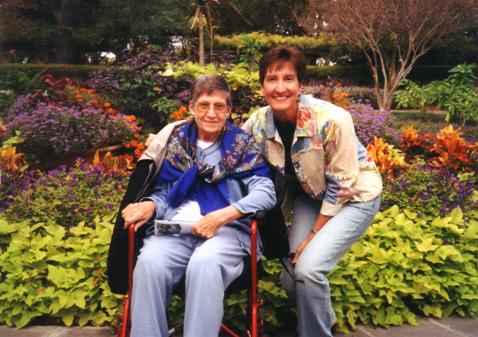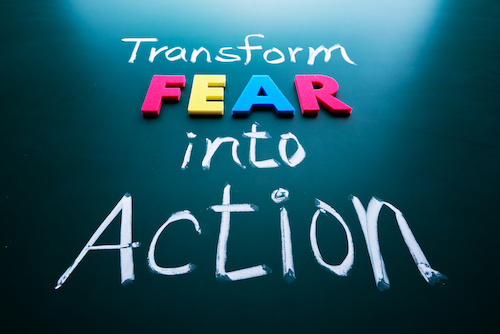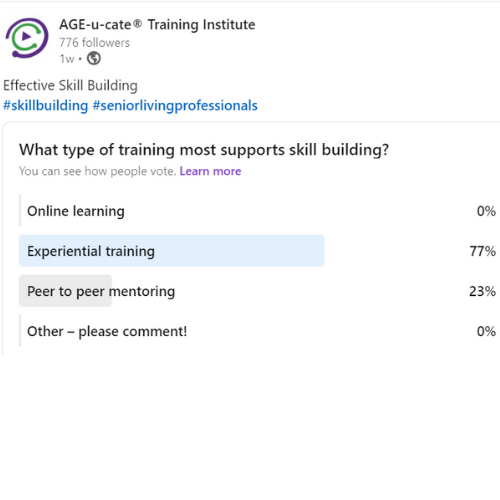Are we listening to the Needs of Family Caregivers? Here's My Story.

Although my personal story of caregiving goes back decades, the message has not changed. My sweet mother, Jeanette, lived with Parkinson's Disease for many years. Our journey together as care partners included the highs of our incredible mother-daughter relationship growing even closer and the lows of experiencing the emotional roller-coaster of managing a disease that is ever-changing and often mysterious.
At 85, Jeanette's health had declined significantly due to the progression of her PD and complications from a broken hip. In addition, my sister was taking care of our mom in her home following a rehab stay, and the stress of 24/7 caregiving responsibilities took a toll on her physical and emotional health. It was time for a change, and a decision needed to be made relatively quickly.
Visiting one care community after another, I soon became embattled with my own emotions as I toured beautifully decorated buildings led by cheery marketing professionals. All the while, I was an emotional train wreck. What was truly important? I had some real soul searching to do.
A friend suggested I visit a residential care community that her dad had been in, so I arranged for a meeting with the owners, one of who was a registered nurse. The home was not in the most convenient area to my home, but was adequate for my sister and me to visit with a drive for both of us. The neighborhood was eclectic but safe. As I drove to the house, my thoughts were on a single track.
Entering the house, one of the care team members greeted me with a warm welcome and hug. The place was lively and bright, though far from fancy. Sitting areas in the large living room included residents, care partners, and family members.
As I made my way to another sitting room to meet with the owner, I noted the care team busy making lunch and chatting about the new recipe for the day. They stopped to say hello and asked if I'd like to stay. How could I pass up a yummy-looking Mexican dish?
As I sat down to talk, I could feel my emotions bubbling, and sure enough, tears started streaming. My decision of where my precious mama would live out her days played heavy on my heart. What did I want for her, for me, and the rest of my family? After all, we were all in this together.
All of the "things" that I thought were important started racing through my head. Within a short driving distance? Not really. Amenities? Somewhat limited. And this sounds so silly now, but at the time, I thought to myself, "this is just not mom's decorating style."
As I pulled myself from the depths of my crying episode, I felt incredible compassion and understanding embracing me. As I explained mom's health needs and history, it became clear what I was seeking.
Beyond the basics of cleanliness, safety, nursing care, I wanted my mom to be loved when I wasn't there. That sounds like a big ask, right?
I wanted my mom not to feel frightened with all that was going on with her body of which she had no control over. I hoped that she could choose her breakfast just like she wanted it prepared and when she wanted. I wished for someone to sit with her and ask about her life and to share her life memories of family, friends, and all that was so dear to her. I wished for someone who would laugh and sing hymns with her. I wanted her to receive heart-felt hugs just like she gave to others.
Had I found the home that could give her what she needed most at this time in her life?
Yes! Mom moved just a few days later to her new home. At the time, she was very ill and was not aware of her surroundings. My sister and I decorated her room with precious things while the care team looked after her night and day. For weeks, we weren't sure if our mama was nearing the end of her life. Had she been anywhere else, the story would be pretty different.
I witnessed abundant love poured out to my mom, to me, and to my sister in those difficult weeks. Looking back, I could not have identified that they were experts at compassionate presence. I was learning from the best of the best. It was unwavering, authentic, and consistent.
Mom's health improved, and with it, her spunky spirit. I often visited to find her laughing with others, engaged in a favorite board game, or sitting in the lovely garden enjoying the serenity of nature. She relished delicious home-cooked meals, eating what and when she wanted, and no limits on her sweet tooth. Ice cream for breakfast? Sure! Jeanette was experiencing joy again, and it was a precious gift for our family and me.
In the final months of mom's life, board games had ended, meals around the table were infrequent, and laughter slowly shifted to more gentle smiles. The care team was in tuned to the process of dying and was a comforting partner for all of us. I often saw a care partner gently rubbing mom's shoulders, hands, and her favorite leg and foot massages became a coveted ritual before bed. The hymn singing was softer and the warm touch longer. I didn't realize then that they were all so adept at preparing us all for our goodbye.
One evening, as I was driving home, what was probably the greatest gift of this remarkable place became very clear to me. There had never been a day when I left my mom and worried she would not be well cared for and truly loved. I never second-guessed the choices they made in providing the very best quality of care for her, and in turn, the gift to our family was immeasurable. In fact, in many instances, they exceeded what I could have done for my mom. I learned that sometimes my best role was simply to be fully present when I visited. When I left, I was completely confident they were fully present in a different but essential way.
Caring for mom and being a part of this team at the end of her life was a unique and precious gift, and it changed my life in unimaginable ways. My work and passion for helping other family and professional caregivers would never have been a reality if it were not for the vast experience and lessons learned along the winding path of being a family caregiver myself.
As providers of care, your intentional efforts to understand what families want and need will help strengthen your mission, build quality care teams, and further your reputation as an organization wholly committed to the families you serve. Despite the challenges we've faced in the last 18 months, getting Back to the Basics could very well be the best starting point to picking up where we left off in our collective mission of improving the quality of life and care for older adults, better training staff and engaging families.
There are 53 million family and friends providing care and assistance to love ones in the United States. We cannot ignore the critical role they play in our health care system. Find out more about taking the next steps to learn how to successfully implement family education and support with engaging and effective staff training programs.



